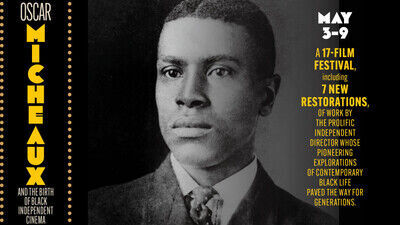
[ad_1]
As a silent film director, Micheaux was at his strongest: His literary style (he wrote seven novels in total) imbued his intertitles with moral messages that at once developed his film’s characters while furthering his deep thematic desires. The revealing editing of “Within Our Gates,” “The Symbol of the Unconquered,” and “Body and Soul” further demonstrates how much the medium complemented his keen eye for depicting the morally corrupt psychologically of bigoted villains. His use of shot/reverse shot, in particular, dissected the double standard at play in who gains sympathy, personhood, and protection from and by the law.

“Micheaux’s stories, themes, characters, and ideas resonated beyond the sounds and images of a specific film to other texts, such as news stories, magazine articles, oral tales, songs, sermons, and other films,” noted Pearl Bowser and Louise Spence in Writing Himself Into History: Oscar Micheaux, His Silent Films, and His Audiences. These early films, in their words, “constituted a Grand Narrative” that sought to tell the story, in all its setbacks and triumphs, of Black Americans.
Though Micheaux’s work lost some dexterity with the introduction of sound, he remained one of the trailblazers. Many Black silent film companies (REOL Productions, Ebony Film Corporation, Norman Film Manufacturing, and the aforementioned Lincoln Motion Picture Company) went out of business because of the increased cost of film production required for sound. Micheaux was the only one left standing. He continued to push the medium, promoting stories of Black life that displayed scenes of upward mobility and high-stepping nightlife. The latter is critical.
While Micheaux usually set nightclubs as corrupt spaces, he also showed the immense talent brimming there: women chorus lines in revealing costumes, suave crooners, unique performers (his picture “Underworld” even has rope dancing), and minstrel scenes involving Black Blackface and double-speak — the latter of which purposefully employed stereotypes to conjure slippier truths. “At the very least, however, it seems fair to suggest that black blackface formed around — and worked to release or ameliorate — a knot of anxieties, tensions, pressures, and contradictions in the lives of blacks in America,” explains Arthur Knight in Disintegrating the Musical. It’s a performance style Micheaux uses in “Darktown Revue” and “Ten Minutes to Live,” whose intentionality is difficult for unacquainted audiences to grapple with.
[ad_2]
CUZMARIT
ok